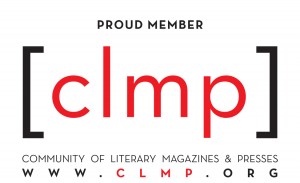Claire Jussel is a poet, writer, and artist from Boise, Idaho. Her work has appeared in or is forthcoming in West Trade Review, Wizards in Space, Split Rock Review, Black Fox Literary Magazine, and SEISMA Magazine. She currently resides in Ames, Iowa where she is pursuing her MFA in Creative Writing & Environment at Iowa State University.
Under a Future Sky by Brynn Saito; Red Hen Press; 112 pages; $21.00
Brynn Saito’s newest poetry collection, Under a Future Sky, contemplates and prods at the interlinking web of place, memory, and self through a resonant and visceral body of poems. This evocative work ripples out from the landscape and memory of the Gila River concentration camp in Arizona where thousands of Japanese Americans, including Saito’s grandparents, were incarcerated after being forcibly removed from their homes during WWII. This is at once a far-reaching and intimate examination in which the poems both hold room to consider their subjects and are in themselves an act of wrangling with, seeing, and forming connections between past, present, and future moments. Towards the end of the collection in “Outro: Ars Poetica,” Saito reveals that “this writing, that is / this performance with ghosts” is a “perpetual horizon, muddy emergence, fertile abyss…” (92). From this “fertile abyss,” Saito crafts beautifully unconfined poems that span a wide and undulating range of emotional tenors, imagery, and forms to create a layered, varied, complicated, and living story.
Among their many merits, Saito’s poems abound with immersive and engrossing imagery. Her language invites a porousness that blends and opens the boundaries between place, the body, the self, other beings, and time. One such example of this deftly sprawling and layered imagery can be seen here:
I become dirt death and star bath—
art in another century.
I become singular and multi-life,
disordered creation, glowing oak canopy
cumulus thunder-spark, moon planet,
grace portal, Bermuda vortex,
singing bowl. I become… (41)
By stacking and shifting images and subjects across each poem, Saito meshes together land and sky, plant and human, deep time and recent history. Saito’s expressive and dazzling language is not only aesthetically gorgeous, but supports the larger movements and mechanics of the collection. Each component in such a litany of images becomes part of a larger and more entangled story. As Saito fleshes out the world of each poem, she also links that world to her familys’ stories. In “Letter to My Mother,” she writes, “Some rivers aren’t visible to us; their watered rush beneath soil. / Some spaces exist between letter and words, / awaiting ignition. I think of your rage. I think of Leigh’s/ tenderness and the lungs of grief, joy anthems, the dead’s/ desire, the saguaro storing all that water and bloating…” (74). One of Saito’s great strengths in this collection is that she does not try to distill the emotions or experiences of her grandparents at Gila River nor her own experience as their descendent. Rather, she expands these emotions and experiences, allowing them to swell, take up space, and become wide ranging through language and time. In this space, specificity and acuteness arise in the naming of plants, place, memory, people that are not confined to their moment, are instead but boundless and interconnected.
This interconnectivity is especially visible in Saito’s treatment of time across the collection. The way in which she slices through and stitches together time and memory can be best described by a line at the heart of the poem “February 19, 1942”: “There is no moment in my life in which this is not happening” (28). This particular line applies to and holds together two distinct memories: Saito’s grandmother packs her life into a suitcase on the day that the forced removal of Japanese Americans began, and decades later as her grandmother laughs and plays with her granddaughters.
While this use of slipstream imagery and cinched time could have easily become unwieldy, Saito creates a palate that is both evocative and essential for understanding a history of this scope, seriousness, and sustained relevance. Additionally, the scope of the collection is pinned down by a constellation of several motif forms that repeat throughout the book. These repeated forms, indicated by shared titles such as “Letter to…” and “Self Disguised as…” form touchstones of familiarity across the collection. Each iteration not only serves as an anchor point, but creates a pattern that amplifies themes of returning, continuation, change, and multiplicity that resonate across the text.
Of these repeated forms, the most notable in Under a Future Sky are the abundance of correspondence letters that appear across the book. Five of these epistolary poems share the titling convention “Letter to…” and are formatted similarly with an opening epigraph, left-adjusted text, and space between each line. Additionally, the book opens with an introductory and invocational poem titled “Dear Reader” and closes with an excerpt of a letter from Saito’s father that reflects on their trip to Gila River. These forms of correspondence create a pulse across the text that is further realized by Saito’s selection of epigraphs. These are some of the most visceral and embodied epigraphs that I have ever encountered in a book of poetry, partially because they are predominantly selected from Saito’s personal correspondence with individuals that she has a personal relationship to. Each “Letter to” poem in the series opens with words from the addressee. The words on the page are part of a tangible and active exchange—a conversation and living accumulation of ideas that extend through and beyond the pages of the book. These exchanges also address the questions and ideas that appear as the opening epigraphs and serve as waypoints for the collection: “What or how did you feel when you visited Poston and Gila River [...] What does your father have to say about all this?” (Brandon Shimoda), and “I am memory alive.” (Joy Harjo). In her poetic correspondence, Saito amplifies the memories of her loved ones and develops answers to these questions through accumulated insights that provide a depth and nuance that surpass the confines of individual perspective and shatter notions of isolation in experience.
Just as Saito’s language is not confined, reduced, or limited into the space of one poem, this collection pushes against the notion of ending or finality. This story isn’t over. This story never ends. Under a Future Sky contains two poems titled “Last Lines,” neither of which are the final word of the collection. The first leads to the end of the first section. The second appears to be and in some ways could be considered the last “true” poem of the book, but after the last line of “Last Lines (II),” beyond the “Notes” pages lies the letter from Saito’s father, and is the last content of the book. In this letter we can find the poetic themes and resonances that can be traced through the whole book. Saito’s father writes about Gila River that “you were there and my own parents were there at one time. I felt a presence of something living and something passed[…] What’s ironic Brynn—my parents wanted to forget this place—but I want to remember it.” Though it is the endcap of the book, this letter contains one of the inciting sparks for the collection: it delivers the opening of the correspondence that was funneled into poetry throughout the collection. The response to this particular letter and a refrain of her father’s words can be found in the second poem of the collection, “Letter to my Father.” By placing this exchange that pre-dates Under a Future Sky as the last words of the book, Saito collapses time in a manner that echoes the way time bent throughout the text and invites a sense of continuation that emphasizes the vitality of these narratives. In the poem “Days I Can’t Feel You,” the speaker says “You do not dim” (82) to the me undisclosed “you” of the poem. This “you” could potentially be addressed to any number of subjects— an ancestor, a future child, or maybe even the world itself to name a few. In reviewing Under a Future Sky, this line could apply to the collection itself and the layered and intermingling stories that it holds. These memories, places, and people do not fade. This book is not a reclamation of what has been haunted, but rather a testimony to what continues to live.
From the lushly detailed lines of the opening poem “Dear Reader” to the intimate presentation of personal correspondence entangled in poetry, the reader is brought again and again into the imagining, contemplation, and rippling continuation of this living story. This is ultimately a text of radical connection that at once explores Saito’s personal narratives and invites the reader to recognize the deeply connected mesh of place, history, and memory that they themselves are a part of.
©2023 Iron Oak Editions LLC
__________________________________________________________________________________________________________________________________________________________________________
__________________________________________________________________________________________________________________________________________________________________________
__________________________________________________________________________________________________________________________________________________________________________
__________________________________________________________________________________________________________________________________________________________________________
__________________________________________________________________________________________________________________________________________________________________________
"You Do Not Dim": Corresponding with Memory, Place, and Time in Brynn Saito's Under a Future Sky
POETRY REVIEW
Stay Connected to Our Literary Community. Subscribe to Our Newsletter
Image by Cedric Letsch from Unsplash
by Claire Jussel
August 17, 2023




